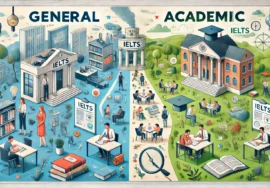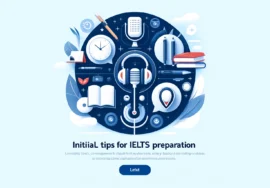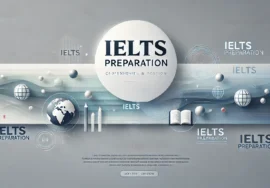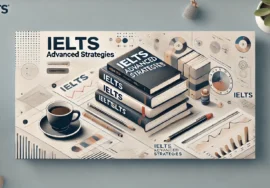
Conquer the IELTS Reading Test: Your Ultimate Guide to Success
Master the IELTS Reading test with our comprehensive guide. Learn essential strategies, question types, and time management techniques to achieve your desired score. Boost your reading skills today!
Conquer the IELTS Reading Test: Your Ultimate Guide to Success
The IELTS Reading test can often feel overwhelming, resembling a race against time. It presents you with complex academic texts, a ticking clock, and a variety of tricky questions. However, with the right strategies, preparation, and mindset, you can master this challenge. This guide will serve as your essential training manual, equipping you with the skills and techniques needed to navigate the IELTS Reading test with confidence and achieve your desired score.
Understanding the Format: Three Sections, Varied Texts

The IELTS Reading test is divided into three sections, each consisting of a long passage (approximately 700-1000 words) on a distinct topic. You will encounter a wide range of academic texts drawn from various fields, such as science, history, and social issues. As you progress through the test, the difficulty of the passages typically increases, requiring you to refine your skills as you go.
Key Features of the Test Format:
- Three Sections: Each section contains one long passage.
- Passages from Diverse Fields: Texts may come from academic subjects, including science, history, social issues, and more.
- Increasing Difficulty: As you move through the sections, the texts become more challenging.
Question Types: Mastering the Techniques
The IELTS Reading test includes a variety of question types designed to test your reading comprehension skills. It’s crucial to understand these question formats to approach them strategically.

Common Question Types:
- Multiple Choice: Choose the best answer from a list of options.
- True/False/Not Given: Decide whether the information in a statement is true, false, or not provided in the passage.
- Matching Headings: Match headings to paragraphs based on the main ideas of each.
- Matching Features: Match features or characteristics to people, places, or things mentioned in the text.
- Matching Sentence Endings: Complete sentences by selecting the correct ending.
- Sentence Completion: Fill in the blanks in sentences with words from the text.
- Summary, Note, Table, and Flow-Chart Completion: Complete summaries, notes, tables, or flow-charts using information from the text.
- Short-Answer Questions: Answer questions briefly in your own words, based on the passage.
Skimming and Scanning: Your Superpowers
Two essential techniques you must master are skimming and scanning. These strategies will help you navigate the passages quickly and efficiently, saving time and improving accuracy.
- Skimming: This is essentially “speed-reading.” Your goal is to quickly get a sense of the main idea and structure of the passage. Focus on the title, headings, subheadings, and the first and last sentences of each paragraph. Skimming helps you gain an overview without reading every word in detail.
- Scanning: This technique involves searching for specific information within the passage, such as keywords, names, dates, or numbers. It’s like looking for a specific entry in a dictionary or index. By scanning, you can quickly locate important details without wasting time.
Understanding Question Types: Strategic Approaches

Each question type in the IELTS Reading test has its own unique challenges, and approaching them with a clear strategy will greatly enhance your performance.
1. Multiple Choice:
- Identify Keywords: Focus on keywords in both the question and the answer choices.
- Scan for Keywords: Quickly locate the relevant section of the text using the keywords.
- Read Carefully: Eliminate incorrect options and read the relevant section carefully to select the best answer.
2. True/False/Not Given:
- Identify Key Information: Focus on the crucial information in the statement.
- Locate the Relevant Information: Scan the text to find the corresponding information.
- Decide: Based on the information in the text, decide if the statement is True, False, or Not Given.
3. Matching Headings:
- Identify Main Ideas: First, read through the headings to get a sense of the main ideas.
- Skim Paragraphs: Skim each paragraph to identify its main idea.
- Match Headings: Select the heading that best summarizes the main idea of the paragraph.
4. Sentence Completion:
- Predict the Answer: Before reading, try to predict what type of word(s) may fit the blank (e.g., noun, verb, adjective).
- Look for Clues: Pay attention to the words and phrases around the blank for hints.
- Synonyms: Be prepared for synonyms or paraphrasing.
5. Summary Completion:
- Identify the Scope: Determine which part of the passage the summary pertains to.
- Keywords: Pay attention to keywords in the summary and listen for them (or their synonyms) in the passage.
- Paraphrasing: Be alert for paraphrased information.
6. Matching Sentence Endings:
- Understand Sentence Structure: Analyze the sentence structure to predict the type of ending required.
- Identify Keywords: Focus on matching keywords between the sentence beginnings and the possible endings.
7. Short-Answer Questions:
- Be Concise: Keep your answers brief and to the point.
- Follow Instructions: Stick to the word limit and any specific instructions.
- Avoid Overthinking: Don’t add unnecessary information—just answer the question based on the passage.
8. Yes/No/Not Given:
- Identify the Claim: Understand the statement or claim in the question.
- Look for Confirmation or Contradiction: Determine if the information in the text confirms or contradicts the claim.
- Avoid Assumptions: If the claim isn’t addressed in the text, choose Not Given.
9. Diagram/Flowchart/Table Completion:
- Understand the Visual: Familiarize yourself with the diagram or table before you start reading.
- Follow the Flow: Pay attention to the flow of information or the sequence in the visual.
- Look for Labels: Listen for specific labels or terms that match the visual.
Time Management: Making Every Minute Count

Time is crucial during the IELTS Reading test. Effective time management can significantly improve your score. Here are some tips to help you maximize your performance:
- Allocate Time Wisely: Divide your time equally across the three passages (approximately 20 minutes each).
- Don’t Get Stuck: If you’re stuck on a difficult question, don’t waste time. Move on and return to it later if you have time remaining.
- Practice Pacing: Practice reading and answering questions under timed conditions to get accustomed to the time pressure.
Active Reading Techniques: Engaging with the Text
One of the key components of success in the IELTS Reading test is active reading. This technique involves not just reading passively, but engaging with the material in a way that improves both comprehension and retention. Here are some practical tips:
- Highlight Key Points: As you read, underline or highlight the main ideas, keywords, and key facts.
- Make Predictions: Try to predict what might come next in the text. This helps you stay focused and engaged.
- Ask Questions: While reading, ask yourself questions about the content, such as: “What is the purpose of this paragraph?” or “What is the main argument in this section?”
- Summarize Regularly: After reading a few paragraphs, pause to summarize what you’ve read in your own words. This reinforces comprehension and retention.
Building Your Vocabulary: A Crucial Component
Vocabulary plays a significant role in the IELTS Reading test, especially when dealing with complex academic texts. Here are some effective strategies to expand your vocabulary:
- Read Widely: Read a variety of texts from different academic fields (science, history, arts, etc.) to familiarize yourself with specialized vocabulary.
- Use Context: When you encounter a new word, try to understand its meaning from the surrounding text. Often, the context will give you clues.
- Create Word Lists: Keep a notebook of new words, along with their meanings and example sentences. Review these regularly.
- Practice Synonyms: IELTS tests often use synonyms. When studying new words, learn their synonyms and practice using them in different contexts.
Improving Reading Speed: Efficient Practice Strategies
Time is of the essence in the IELTS Reading test. Therefore, improving your reading speed while maintaining comprehension is a critical skill. Here are some tips to help you speed up your reading:
- Practice Regularly: The more you read, the faster you’ll become. Make reading a daily habit to increase both speed and comprehension.
- Avoid Subvocalization: Many readers read aloud to themselves in their minds (subvocalization). Try to eliminate this habit to increase your reading speed.
- Focus on Understanding, Not Just Speed: It’s tempting to rush through the text, but it’s important to balance speed with comprehension. If you don’t understand a section, slow down and reread.
- Set Time Limits: During practice sessions, set strict time limits for each passage to simulate the test environment. This helps build pacing skills.
Dealing with Difficult Passages: Staying Calm Under Pressure
Some IELTS Reading passages are more challenging than others. How you respond to difficult texts can make a big difference. Here are strategies to help you stay calm and focused:
- Don’t Panic: If a passage feels tough, take a deep breath and stay calm. It’s normal to encounter challenging material.
- Focus on the Question: Instead of trying to understand every detail, focus on the question you need to answer. Often, the questions guide you to the relevant parts of the text.
- Skip and Come Back: If you don’t understand a section, skip it and come back later. Answering easier questions first can build confidence and save time.
- Use Context Clues: Even if you don’t understand every word, use the surrounding context to infer the meaning.
Practice Tests: The Key to Improvement

The best way to prepare for the IELTS Reading test is through consistent practice with real test materials. Here’s how to make the most of your practice tests:
- Simulate Test Conditions: Take practice tests under timed conditions to get used to the pressure of the real exam.
- Review Your Mistakes: After completing a practice test, carefully review the questions you got wrong. Understand why the correct answer is right and why your answer was wrong.
- Track Your Progress: Keep a record of your scores to track improvements and identify areas that need further practice.
- Mix Practice Questions: Use a variety of practice questions from different test sections. This helps you get comfortable with all types of questions and texts.
Conclusion: Read Actively and Conquer the Test
The IELTS Reading test may seem challenging at first, but with the right approach, it’s absolutely conquerable. By practicing active reading techniques, familiarizing yourself with different question types, and developing solid time management strategies, you’ll be well on your way to achieving your desired score.
Stay committed, practice regularly, and with the right preparation, you can unlock the opportunities that the IELTS Reading test can offer.








